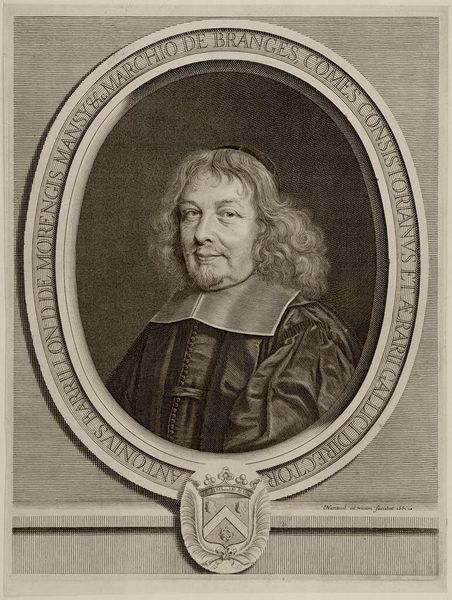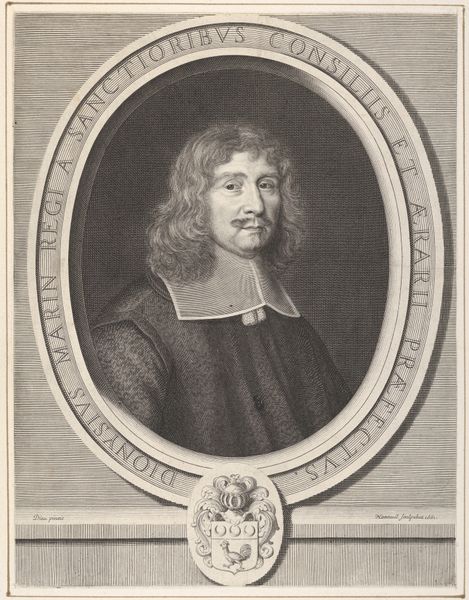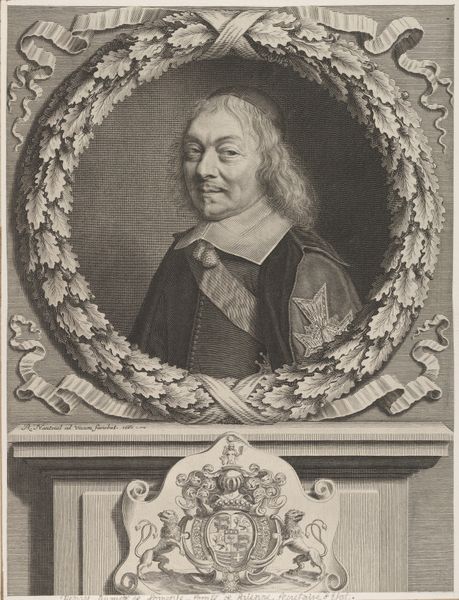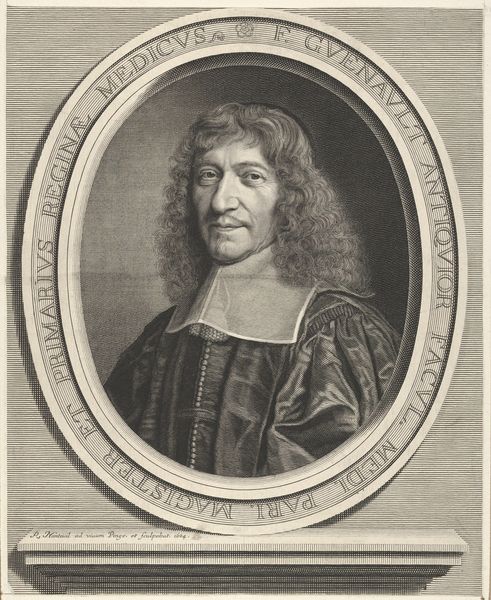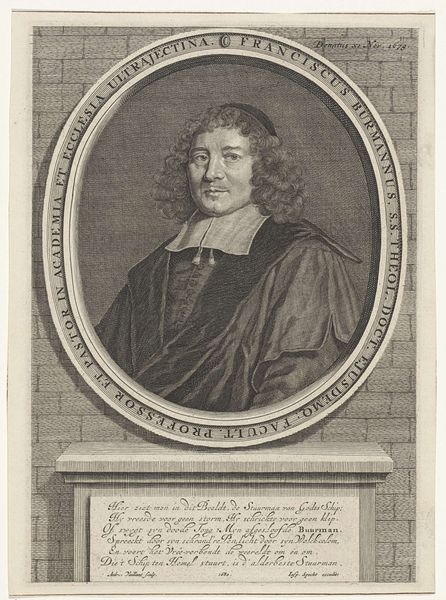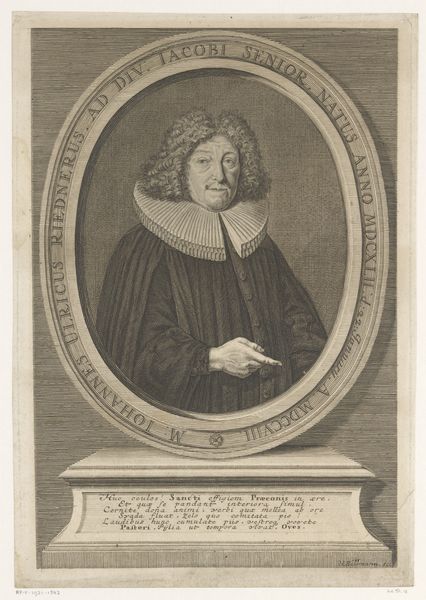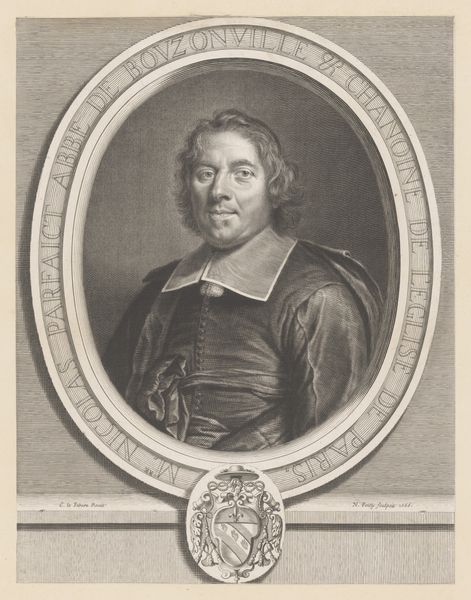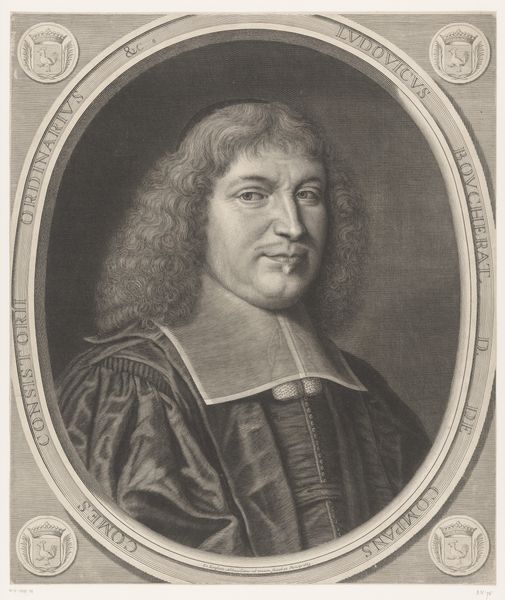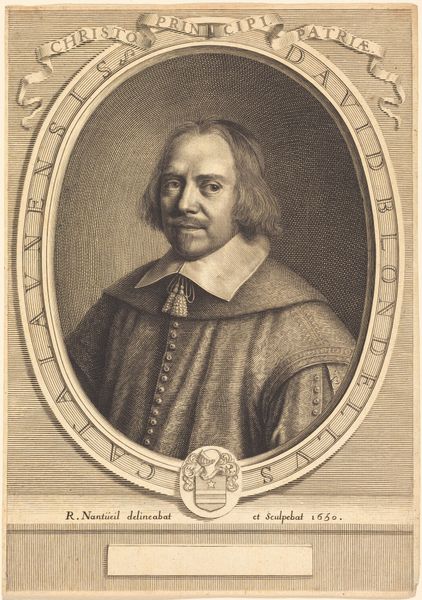
drawing, print, etching, engraving
#
portrait
#
drawing
#
baroque
# print
#
etching
#
engraving
Dimensions: Sheet: 12 1/2 × 9 3/4 in. (31.7 × 24.7 cm)
Copyright: Public Domain
Curator: This print is Robert Nanteuil's "Antoine Barillon," created in 1661 using etching and engraving techniques. It's currently held at The Metropolitan Museum of Art. Editor: There's something incredibly dignified and composed about it. How would you interpret this work within its historical context? Curator: Well, first notice how the portrait's framed within this elaborate oval cartouche. That inscription tells us much about Barillon’s status. But what about the politics embedded in portraiture itself at this time? Consider how image-making served the agendas of power. Does this portrait seem to reinforce or challenge the aristocratic status it depicts? Editor: I see what you mean. He’s dressed in what looks like ministerial garb. It's not just a depiction of a man; it's a representation of authority and status during the Baroque era. Are there specific elements that stand out as markers of that power? Curator: Absolutely! Consider the controlled use of light and shadow and the way Nanteuil meticulously renders textures. But it’s not just about showcasing technical skill. Think about what these techniques might signify in relation to the sitter's position within the French court. Editor: It almost feels like the portrait is negotiating between individual personality and social role. It definitely makes you think about how much these kinds of images contributed to shaping perceptions of power and legitimacy. Thank you. Curator: My pleasure. It’s through such interrogations that we start to reveal the complex intersections of art, identity, and power that defined that era.
Comments
No comments
Be the first to comment and join the conversation on the ultimate creative platform.
